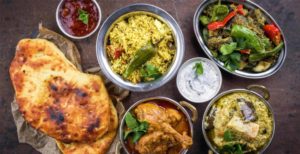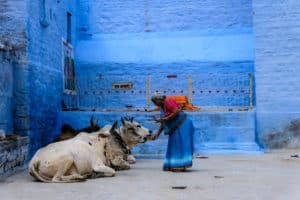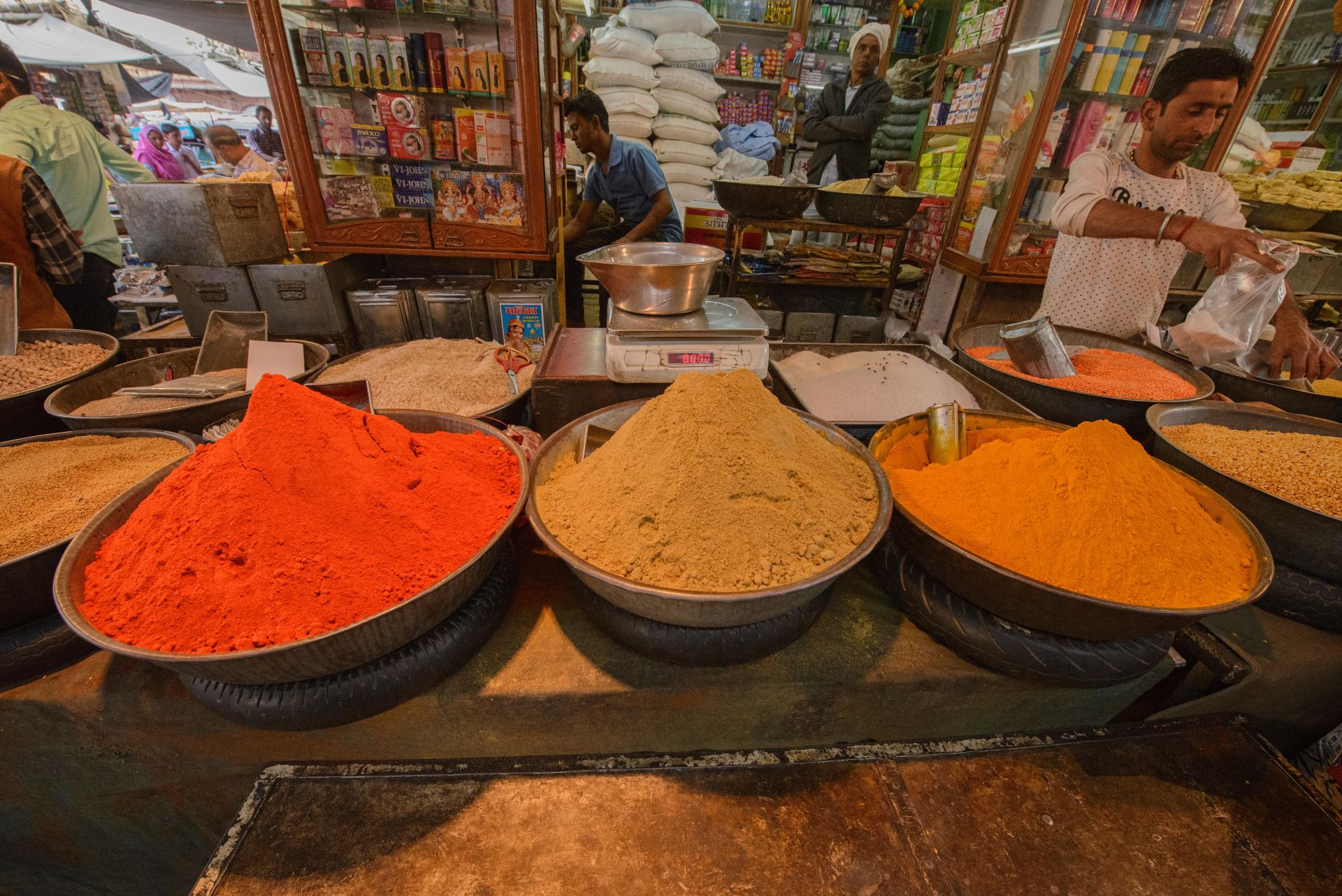When I talk about my travels in India, one of the first things I am always asked is “what was the food like?” Just like in Africa, authentic Indian cuisine is as rich in variety as the country itself.
From the delicate flavours of the classic cuisine developed in the Imperial courts, to the complex regional specialties made with exotic ingredients, each area of India has its own unique cuisine. Hot chilli curries come from the arid deserts of Rajasthan, whereas delicious fish dishes dominate the cuisine of the coastal areas of Bengal, Goa, and Kerala. For the less adventurous many restaurants and hotels now offer anything from pizzas and burgers to sophisticated multi-course European meals. Most places that you might stay in will offer you a choice of either western or authentic Indian cuisine .
Unfortunately, India has unjustifiably got a bad reputation with travellers for food. I can quite honestly say that in over 40 years of travelling, I’ve only had the infamous “Delhi Belly” once. Even then, that was through my own fault, by drinking a bottle of water that had been opened and refilled. As long as you are careful to avoid drinking tap water and wash your hands regularly, you should have nothing to fear. So, when it comes to Indian cuisine, like everything else whilst travelling, embrace the country and its culture and just go with what you get. I can guarantee that the majority of the time, you will love the experience and the food will be more than worth it.
What is a Curry?
You may think curry is Indian, but there’s no such word for word in any of the country’s many official languages for curry. So, what is curry, and how did the variety of spices, sauces and various ingredients come together in these fantastic dishes that are now lumped together under one name? What should we call these dishes that are transformed into something completely different and transported around the world and given the name curry?
Modern curries are defined as anything that has a sauce or gravy. They can be made with or without spices, but the question remains: how did India’s many and varied ragouts and stews all come to be known as curry? For that, we have to look at Portugal, Britain, and The East India Company.
According to Lizzie Collingham in her book A Tale of Cooks and Conquerors, to trace the Indian origins of curry, we need to go back to when the Portuguese first captured the southern province of Goa in the 1500s. One of the questions they would ask the Indians was “what are you eating?” and the Indians often replied using the word “Kharai”. As Collingham explains, this likely referred to a particular spice blend. Over time “Kharai” became “curry”, naming the dish we now know.
Curry in Britain
In 18th century Britain, merchants returning from India had to satisfy their appetites for Indian cuisine in local coffee houses. As early as 1733, curry was being served at the Norris St Cafe in Haymarket. By 1784, curry and rice had become specialties of many restaurants in Piccadilly. The first British cookbook to include curry recipes was The Art of Cookery Made Plain And Easy, published in 1747.
The first purely Indian restaurant was the Hindustani Coffee House, which opened in 1810 in Portland Square Mayfair. The modern British curry house became firmly established in the 1940s and 50s when a majority of the Indian restaurants in London opened up. These restaurants often employed ex-seamen from Bangladesh, many of whom would go on to open their own restaurants.

Are Curries British or Indian Cuisine? – Authentic Indian Cuisine
Eating hot curry after a night out in the pub became a British tradition, so much so that the United Kingdom now celebrate National Curry Week every October. Curry has become so popular that it contributes more than £5 billion to the British economy. In 2001 Britain’s Foreign Secretary Robin Cook referred to Chicken Tikka Masala as a true British national dish.
However, the curry you find in the UK is an Indian dish that has been modified for British tastes. If you’re travelling to India and you’re expecting to only see British style curry, you’ll be surprised by the variety and distinctiveness of Indian cuisine. If you want to eat lots of rich sauces, depending on the area you are visiting, they could be either delicately perfumed or spicy hot – the choice is going to be yours. If you’re a vegetarian or vegan, this is also not a problem – as the option for meatless meals are also available.
Whatever you choose, there is a wide variety of mouth-watering foods to try, so before you go to India, don’t worry about getting Delhi belly and embrace the cuisines of the areas of India that you’re going to visit.




